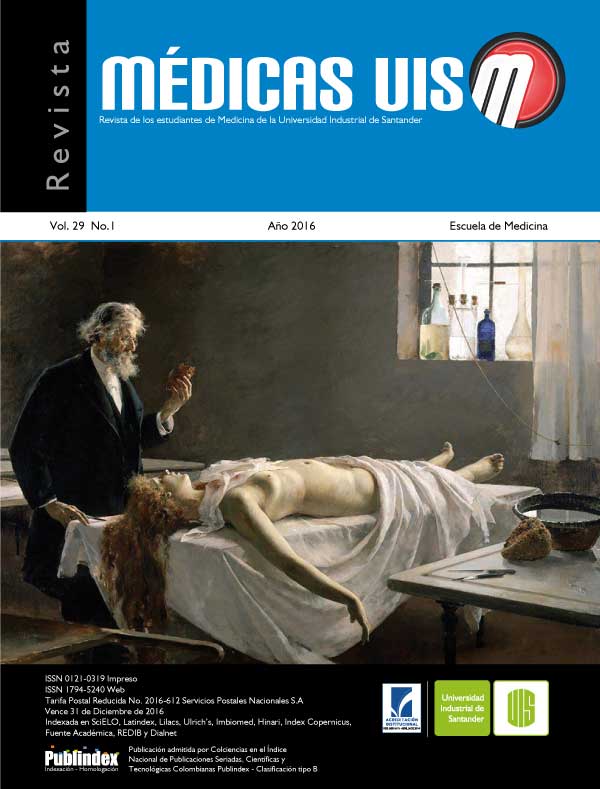Abstract
ABSTRACT
The peer tutoring is a teaching strategy where generally more advanced semesters students, accompanying their peers from lower semesters in reinforcing learning processes within a subject area. In Universidad Industrial de Santander this mode is implemented through “Programa de Asesoría para el Mejoramiento del Rendimiento Académico”, seeking to reduce the dropout rate in all academic programs. The objetive of this paper is to reflect on the importance of peer tutoring and describe the methodology provided by the program in the section histology of general morphophysiology land subject from the medicine program. Because peer tutoring has benefits for both the tutor and the beneficiary, it is important to implement this strategy in the transition from primary school to college and that is why the program recruitment, training and assessment tutors. Tutorials are conducted in small groups in the laboratory with visualization of histological slides and using media to the description of the different microscopic structures. MÉD UIS. 2016;29(1):71-5.
Keywords: Interactive Tutorial. Programs. Histology. Education. Mentors.
References
Gómez Alicia. Enseñanza en la virtualidad. Tutorías entre pares estudiantiles y docentes. [Tesis de grado] Uruguay: Universidad de la República, facultad de humanidades y ciencias de la educación, 2013.
Alzate-Medina GM. Peña-Borrero LB. Peer Tutoring: Developing Writing in College Education. Univ. Psychol. 2010;9:123-38.
Rudland JR. Rennie SC. Medical faculty opinions of peer tutoring. Educ Health (Abingdon, Print). 2014;27(1):4-9.
Santee J. Garavalia L. Peer Tutoring Programs in Health Professions Schools. Am. J Pharma Educ. 2006;70(3):1-10.
Fernández Martín FD. Arco Tirado JL. López Ortega S. Heilborn Díaz VA. Prevención del fracaso académico universitario mediante tutoría entre iguales. Rev. latinoam. Psicol.2011;43(1):59-71.
Sobral DT. Cross-year peer tutoring experience in a medical school: conditions and outcomes for student tutors. Medical Educ. 2002;36:1064-70.
Salerno Kennedy R. Henn P. O’Flynn S. Implementing peer tutoring in a graduate medical education programme. Theclinicalteacher. 2010;7:83-9.
Ministerio de educación. Estadísticas de permanencia en el 2013 en Educación Superior. [Internet]. 2013 [Citad0 20 Nov 2015]. Disponible en: http://www.mineducacion.gov.co/sistemasdeinformacion/1735/articles-254702_archivo_pdf_estadisticas_2013.pdf
Castaño JJ, Cerón AC, Collazos AK, Molina AM, Osorio J, Ospina A, et al. Factores que inciden en la motivación académica en un programa de medicina, Manizales, Colombia, 2010. ArchMed. 2012;12(1):46-61.
Lapeña C, Sauleda N, Martínez A. Los programas institucionales de acción tutorial: una experiencia desarrollada en la universidad de alicante. RIE. 2011;29(2):341-61.
Cardozo CE. PAMRA reconstrucción de realidades, sueños y vidas desde una mirada colectiva. [Tesis]. Bucaramanga: Universidad Industrial de Santander. Escuela de educación,Maestría en pedagogía; 2010.
Laguzzi J, Bernardi S, Araujo AM, Ventura AC, Vigliano FA. Estilos de aprendizaje de los estudiantes de medicina veterinaria de la Universidad Nacional de Rosario, Argentina. Rev. electrón. vet. 2013;24(2):151-6.
